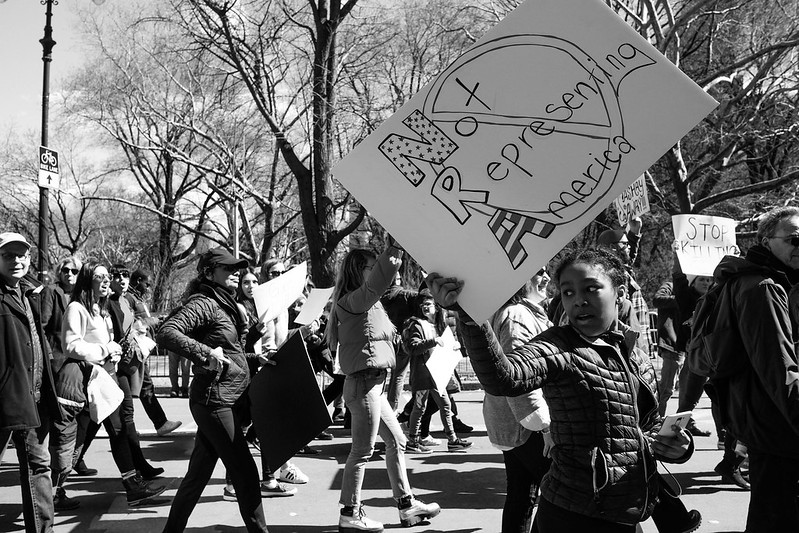Right Now, Silence Is Not an Option--Diverse Voices Must Shape the Future
Right Now, Silence Is Not an Option—Diverse Voices Must Shape the Future
8/5/2022 by Lola Vinson
The ties that bind us to one another—that transcend race, class, generational divides, language and more—are the stories we share. Silence is not an option when we are fighting for our lives.

The March For Our Lives in New York City on March 24, 2018. (B.C. Lorio / Flickr)
Social media is a key element of my job as a communications strategist, but I haven’t posted on my own Instagram page in more than 18 months. Professionally, I help organizations and people use the art and power of stories to connect to their audiences and create change, making social media an indispensable conversation and amplification tool. Personally, however, I‘ve been silent. Like most people, I experienced tremendous loss and grief in 2020, and it depleted my inspiration and motivation.
. . . . . .
This feeling persists today as Americans endure a multi-front assault on democracy playing out with the overturning of Roe v. Wade and the ongoing fallout from the 2021 insurrection. Recent back-to-back mass shootings in Indianapolis, Highland Park, Ill., Buffalo, N.Y., and Uvalde, Texas, are just the highest-profile incidents out of a total of more than 300 so far for the year. And as much as some would like to dismiss them and downplay their rampant destruction, America is still battling the impervious plagues of COVID-19 and white supremacy.
. . . . .
Communications professionals are in the thick of the uncertainty and instability that comes with crisis. The industry operates much like social media—an always-on, around-the-clock rush to be the first and the loudest. Whether a journalist, writer, publicist, social media manager, communications director or anything in between—the job is much more grind than the glamour that appears on the surface.
. . . . .
Certainly, burnout is not exclusive to the communications industry. Healthcare professionals and educators overcome impossible odds and stretch themselves beyond capacity in service to others every day. And the constant broadcasting of violent, harmful and catastrophic images almost guarantees some degree of secondhand trauma for adults and children. Nevertheless, secondary trauma does have a unique impact on communicators. It’s one thing to experience trauma vicariously through others as with social media and the news. It is another matter entirely to be responsible for shaping the conversations and narratives around the devastation.
It can feel impossible to translate the volatile waves of emotion into meaningful words that still don’t even begin to convey the full breadth and depth of our collective grief. This is especially true for communicators in the social justice space and BIPOC employees across the spectrum of scope, title, and cause because there is the same—and often greater—pressure to perform at a high level while navigating deeply personal and visceral reactions to perpetual trauma with no recourse or outlet.
. . . .
https://msmagazine.com/2022/08/05/silence-diverse-voices-black-covid-abortion-stories/
